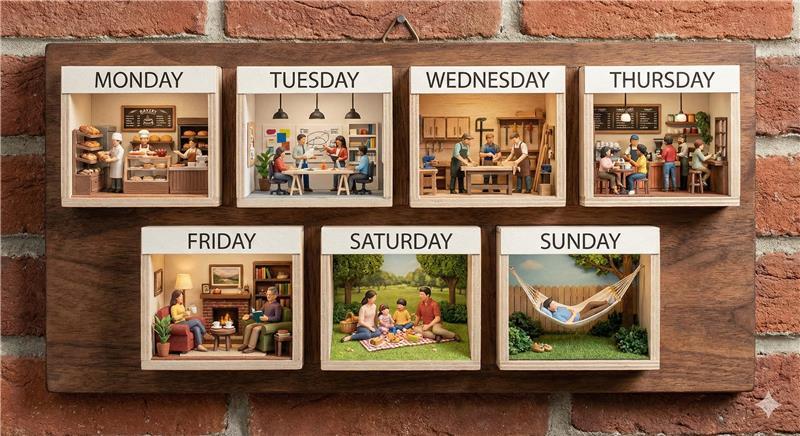How to Know If a Four-Day Workweek Is Right for Your Business
The four-day workweek has become one of the most talked-about workplace shifts of the last decade. Large corporations are experimenting with it....
2 min read
 Clay Hamlin
· August 14, 2025
Clay Hamlin
· August 14, 2025

The job market is shifting, and small business owners are feeling the effects. If your expectations are based on what happened in 2008—or even during COVID—today’s reality may surprise you. A slowing economy doesn’t always follow the patterns we expect.
Here’s what today’s shifts could mean for your business.
While wages are staying high, availability is improving. Small businesses that struggled to fill roles over the last few years may now find more qualified candidates in the pool.
But don’t expect wages to drop.
Why? Because even if more people are available, the cost of living hasn’t gone down. Prices for items such as coffee, steel, clothing, leather goods, appliances, and many other goods all remain high, and look like they will go even higher, keeping wage pressure high.
Employees won’t work if their paycheck doesn’t cover their grocery bill.
So yes—staffing might get easier. But cheaper? Probably not.
More job seekers doesn’t mean cheaper labor—rising living costs continue to drive wage expectations.
If your business relies on migrant workers—whether it’s farming, landscaping, or certain types of manual labor—you’re facing a very different reality. That labor pool has shrunk—and for now, there’s no indication that will change.
Without those workers, higher wages may be the only way to fill positions—and that often means raising prices to keep margins intact. It’s a tough situation, and the pressure can build fast if you’re not planning for it now.
Shrinking labor supply means higher wages aren’t a choice—they’re a condition of staying staffed.
Migrant labor isn’t the only factor. Other industries are feeling the ripple effects of a softening economy in their own ways.
How the Shifting Economy Is Impacting Small Business Sectors
They’ve already been battling staffing issues and price increases. Now, with certain food costs tied to tariffs that appear more likely to last, and supply disruptions, it’s getting harder to protect profit margins.
Customers still want convenience—but how long will they keep paying more? That’s the real question.
Both have held relatively steady. If you’re in the trades, logistics, or light manufacturing, you’ve likely seen some resilience. But don’t get comfortable—labor and supply costs still demand close attention.
Physical storefronts continue to face pressure. The online shift isn’t slowing down, and lighter foot traffic means tighter budgets and less staffing flexibility.
This isn’t just economic theory. These changes affect your real-world planning:
And if you’re not watching the numbers behind those decisions—your margins will take the hit.
Margins don’t vanish overnight—they slip away quietly when no one’s tracking them closely.
When economic signals get murky, monthly financial statements give you the visibility to:
If there’s a bright spot in all this, it’s that small business owners who dig into their numbers have a serious edge.
While others guess, you’re planning. While others wait for pressure to ease, you’re already adjusting. That’s what financial visibility allows—and it’s why some businesses adapt while others stall.
A slowing economy doesn’t mean panic—but it does call for staying sharp on the numbers that guide your decisions.
Small businesses that treat their financial statements as a real planning tool—not just a scorecard—are best positioned to navigate changing conditions.
Looking for practical ways to apply this? We work with business owners every day who are figuring out how to keep crews staffed, protect margins, and plan for the next quarter. Schedule a discovery call and let's talk through whether we're a good fit for your business.
▶️ For more perspective, watch our related video: The Surprising Truth About Jobs and a Slowing Economy

The four-day workweek has become one of the most talked-about workplace shifts of the last decade. Large corporations are experimenting with it....

We've all seen the headlines. Another major company announces that everyone needs to be back at their desk. No exceptions. And if you're running a...

If you work with a payroll provider for your small business, payroll typically runs on a set schedule with very little day-to-day involvement from...